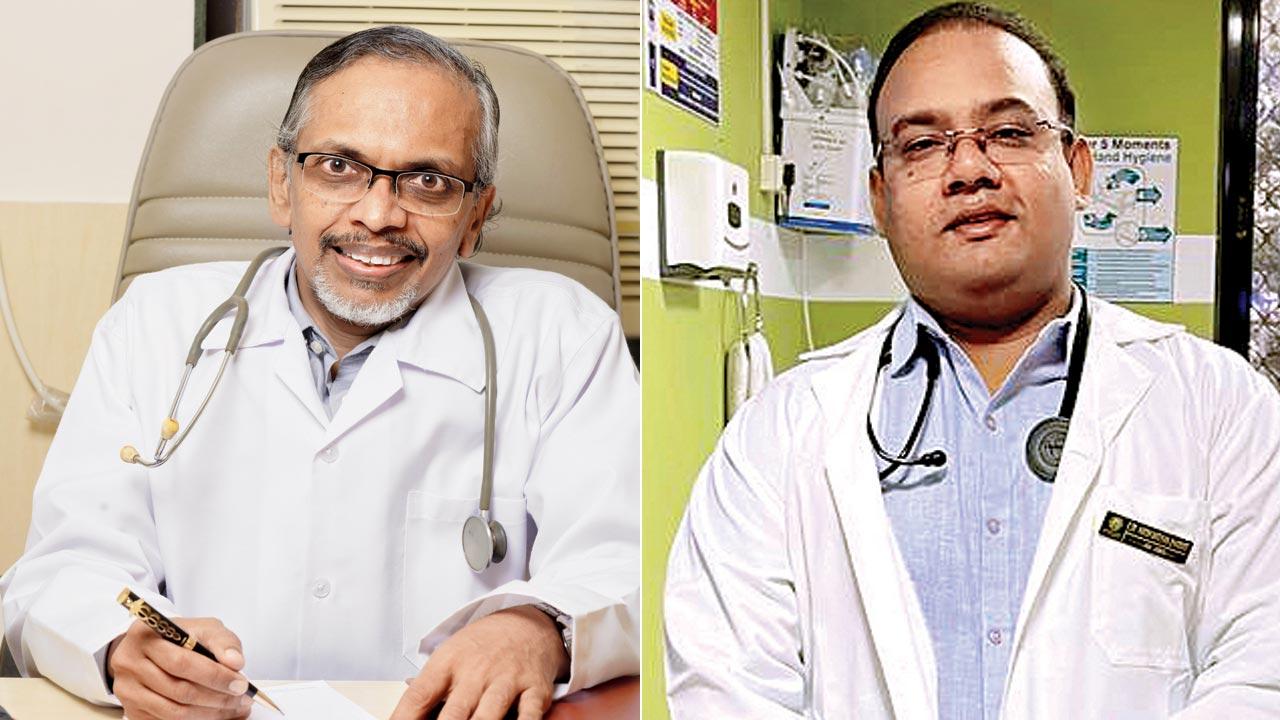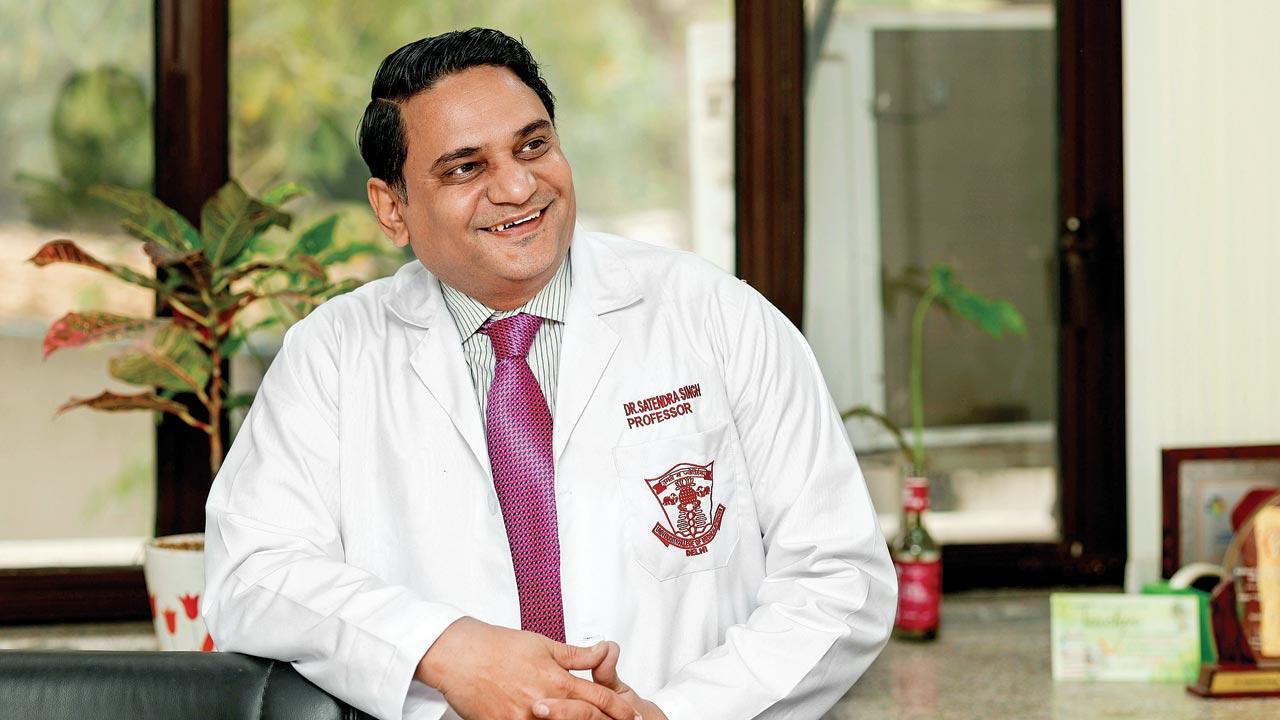Doctors with disabilities save lives, speed up recovery and heal patients. Theirs are stories of excellence, hard work—and discrimination from the very profession they excel at

Medical practitioners with sight, speech and hearing impairments use sign language and the support of assistants to communicate with their patients. Representation pic
It was in medical school, in the 1940s, that Dr Manohar Dole began to lose his hearing. A fit young man, the ophthalmologist would soon be diagnosed with otitis media—a recurring ear infection that can potentially lead to deafness. But that didn’t stop the good doctor in his tracks in Maharashtra’s Narayangaon, where he conducted monthly free eye camps in talukas like Ambegaon, Khed and Shirur.
He also dedicated 40 years to the building and nurturing of an eye hospital that offered no-cost surgeries to the less privileged and those neglected by their birth families. This year, when Dr Dole is in his late ’90s, he was conferred the Padma Shri for the work he put into this hospital, and the lakhs of rural and tribal lives he touched.
The nonagenarian is among a number of illustrious doctors living with disabilities who have devoted their lives to providing medical care—privatised and charitable—and educating future generations. For some, their disability is a catalyst to heal those with the same condition; for others, it is a reality they negotiated as they lived full, satisfying lives in service of others. A limiting, niggling issue common to their varied journeys is that of discrimination at the hands
of institutions.
 Dr Rajan TD and Dr Harshvardhan Bhamare
Dr Rajan TD and Dr Harshvardhan Bhamare
mid-day visited the offices of established clinicians in Mumbai and New Delhi who are disabled, to learn about why they ventured into medicine and the confidence their patients put in them. We found stories of academic excellence, legal cases filed in the long fight for rights, and introspection about personal ability.
Purvi Savla is something of a marvel in Malad’s Evershine Nagar. The homoeopath has been an abiding presence in the neighbourhood for 28 years, where her patients have included multiple generations of families. This writer has memories of the visually impaired doctor emerging from her car and walking determinedly to her clinic, where she was supported in her work by an assistant doctor and compounder. “There was a time,” Dr Savla recalls, “when I used to travel to work by train—even during rush hour. I’ve fallen on the platform a few times, but that’s never stopped me from showing up at work.”
It was in Class 9 that Dr Savla decided she would pursue homoeopathy, encouraged by her father. The years that followed were marked, to some extent, by hostility: Her college professors were neither keen to award her admission, nor were they enthused to teach her. “My confidence began to dip—this was also a period when I had very few friends. Some of my batchmates and seniors were encouraging of me, but the encouragement didn’t exceed the overall discouragement,” she says.
 Pic/Nishad Alam
Pic/Nishad Alam
Dr Savla’s practice took off about three years after she first began; her growth is premised on strengthening her other senses as well as her knowledge. She is pragmatic about the impediments caused by the lack of vision, especially in adopting newer softwares that have not been made more accessible to medical professionals such as herself. But her disability hasn’t come in the way of diagnoses. “I use a process I was taught in college. I isolate myself and focus on the patient’s symptoms… Children, I believe, make for better patients. They don’t lie about their symptoms out of fear of the outcome,” she explains.
An observation that many disabled doctors share is that their circumstances may make them more approachable and empathetic in the eyes of patients, but the success of their practice is ultimately bolstered by their commitment to being good medical care providers. Dr Harshvardhan Bhamare is the preferred doctor at many of the set-ups where he consults—where the OPD tends to be quite busy. It was his background as a polio survivor that prompted Dr Bhamare to take up neurology as a specialisation.
“I’m able to objectively assess my own skills because of patient feedback. Lives saved and successful cases of recovery reaffirm my abilities as a doctor. These examples are particularly helpful on difficult days when I am burdened by other problems or when managing my disability can seem exhausting,” says Dr Bhamare. But even a popular physician like him still has a handful of potential patients who may respond with reservation or scepticism when they learn of his condition.
Sadly, the recognition won by doctors who live with disabilities hasn’t curbed the challenges students continue to face today. Young clinicians who spoke to this writer revealed the pressure from authorities to hide pre-existing conditions like diabetes or epilepsy—to both, the patients they treat at teaching hospitals, as well as their own peers. And those whose productivity was perceivably affected by a disability, were asked to quit residency programmes or switch specialisations.
Some medicos, like Dr Rajan TD, make prudent choices to ensure career longevity. Diagnosed with polio before he could turn two, the dermatologist is attuned to using crutches with ease. He may have been limited by the staircases on campus as he pursued his degree, but nothing could keep Dr Rajan away from the operation theatre. He considered cardiology and orthopaedics, but knew that he may not be seen as the right candidate when having to tend to emergency cases. “Pathology was recommended to me, but I chose dermatology instead. I desired a life committed to interactions with humans, not machines,” he explains.
If Dr Rajan has doggedly pitched charitable initiatives for the disabled, especially children, it is because his own journey is characterised by perseverance. “My parents wanted me to be on the move all the time. They presented medicine as a way to be helpful to others,” he says.
As he split time across four clinics in his 32-year-old career, the dermatologist was equally committed to being a life-long activist. When mobility became a pressing concern as he embarked on his own practice, Dr Rajan wrote to motor companies seeking a model that would suit him and others like him—and Maruti Suzuki stood up to the occasion.
It is the same activist’s spirit that pushed the Andheri-based practitioner to fill the gaps in India’s disability rehab network. “For 20 years, I’ve had a ready plan for a disability clinic. It was under the Sneh Deep Trust that six of my peers and I set up, that the blueprint materialised. We work with children with special needs to help them become self-sufficient, by giving them appliances like ear implants,” the dermatologist shares.
For Dr Satendra Singh, a physiologist and professor at the University College of Medical Sciences & GTB Hospital, the road to advocacy for fellow doctors was one that began with his own struggles. After his MD, when he applied for a job in the teaching sub-cadre of the central health services, Dr Singh—who was diagnosed with polio in his infancy—received no response. Despite the then three per cent reservation for candidates with locomotor disability in the lower limbs, many candidates like him were being denied jobs. His subsequent legal battle, spanning across four years, led to a favourable court judgement which opened up hundreds of jobs in the teaching and non-teaching sub-cadres to doctors living with disabilities.
“Disabled doctors have to prove their competency throughout their college and residency years. My experience made me realise that we have to keep proving themselves, over and over,” rues Dr Singh, who founded Doctors with Disabilities: Agents of Change. The platform comprises 250 medical professionals from across the country. Since his groundbreaking case, he has been part of a number of advocacy initiatives to challenge limiting guidelines which exclude individuals who may have lost a finger, or those who have haemophilia or dyslexia, from practising medicine.
Foremost in his priorities now is changing the way medicine itself views disabilities. “Another important change was in our curriculum—we still see disability as something abnormal that needs to be fixed. But this is not true. We conceptualised disability competencies and rights, and eight of these are included in the new syllabus,” Dr Singh shares. He says that the bias against disabled individuals’ capabilities exists among the general public—but also healthcare providers. “Both automatically assume that anyone who is wheelchair user is a patient. We want to change that attitude to show that a wheelchair can enable careers in medicine,” the physiologist explains.
Are the laurels won by medical professionals like Dr Dole, or Mumbai’s reputed oncologist and Padma Bhushan winner Dr Suresh Advani, able to cause an impact on the ground level? Dr Singh remains sceptical, since policy makers within medicine themselves aren’t involving disabled stakeholders. He cites the example of pioneering rehabilitation expert Mary Varghese, a paraplegic woman popularly known as the ‘wheelchair surgeon’. “Her background seems to be invisibilised and forgotten by those who are now taking the specialisation forward,” the physiologist observes. “It’s time that we begin to consider the value of lived experience among doctors, and how it can enrich their expertise.”
0.4 per cent
Seats assigned to disabled candidates from a total of 5 per cent (as per data from 2021 from the AIIMS entrance exam)
 Subscribe today by clicking the link and stay updated with the latest news!" Click here!
Subscribe today by clicking the link and stay updated with the latest news!" Click here!










